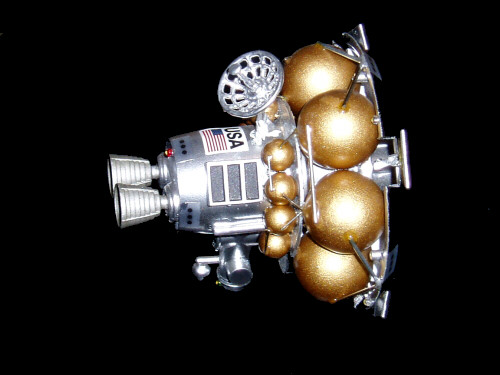Aerobraking Spacecraft
 |
Aerobraking and aerocapture use the atmosphere as both a brake and a steering wheel. The friction of the upper atmosphere against the blunt bow of the spacecraft slows down and lowers the craft's altitude. For a Mars-bound spacecraft, using aerocapture rather than retrorockets can reduce the required propellant mass by as much as 40 percent. However, the spacecraft is subjected to considerable aerodynamic heating and high deceleration forces (as high as five gravities) during aerocapture.
About the model: The above model was inspired by some of the aerocapture vehicle designs considered for NASA's "Mars Express" in the 1990s. The spacecraft is designed around a broad, saucer-shaped aerobrake which doubles as a heat-shield and protects the vessel during aerocapture. All spacecraft systems are located behind the aerobrake. Four small deflector flaps located around the edge of the aerobrake are used to help control the spacecraft's attitude during aerocapture. The model was constructed using a mixture of left-over 1/200 and 1/144 scale Space Shuttle model parts (engines and docking apparatus), a cardboard tube (main hull), wooden balls (fuel tanks), sheet plastic, and the end of a discarded hummingbird feeder (the aerobrake).